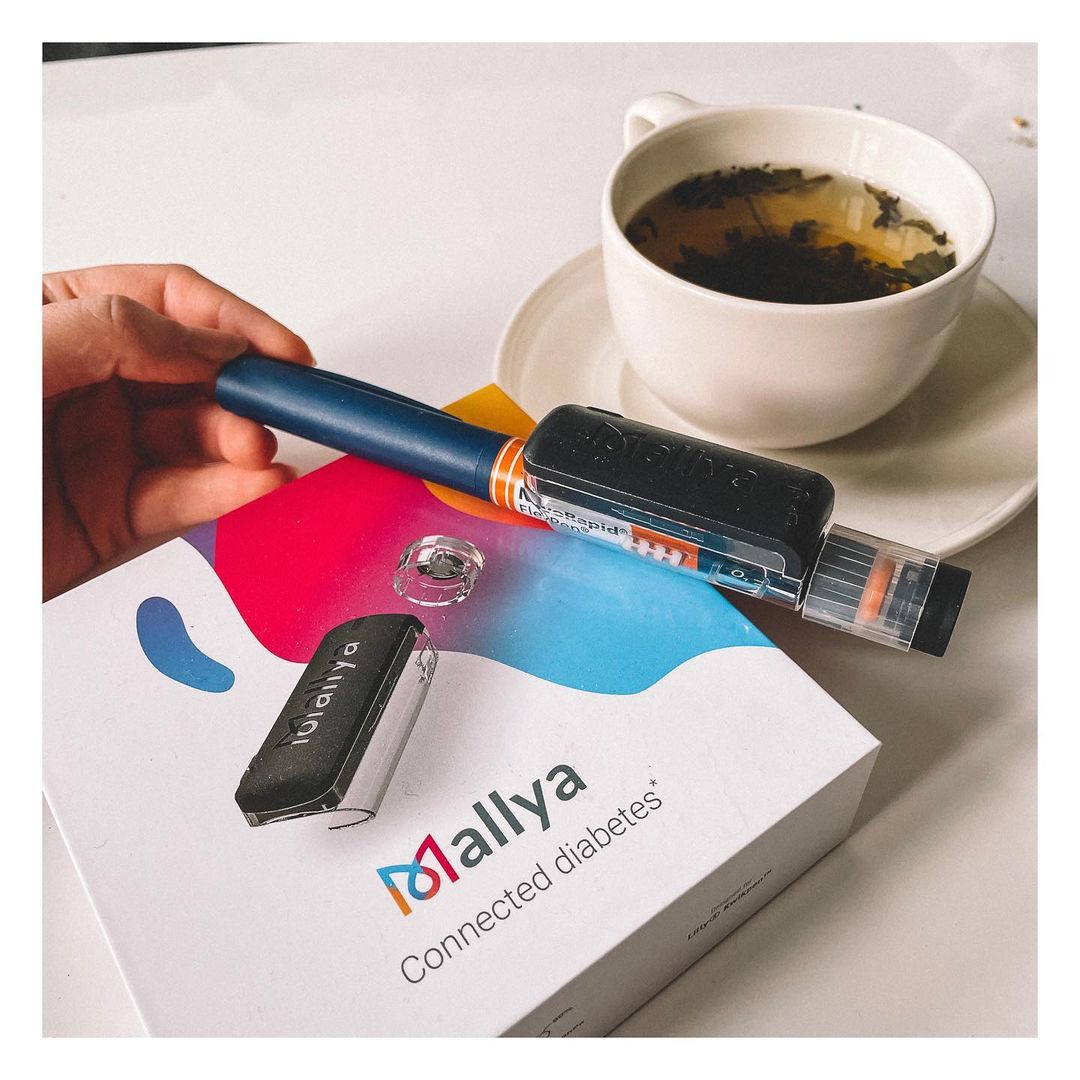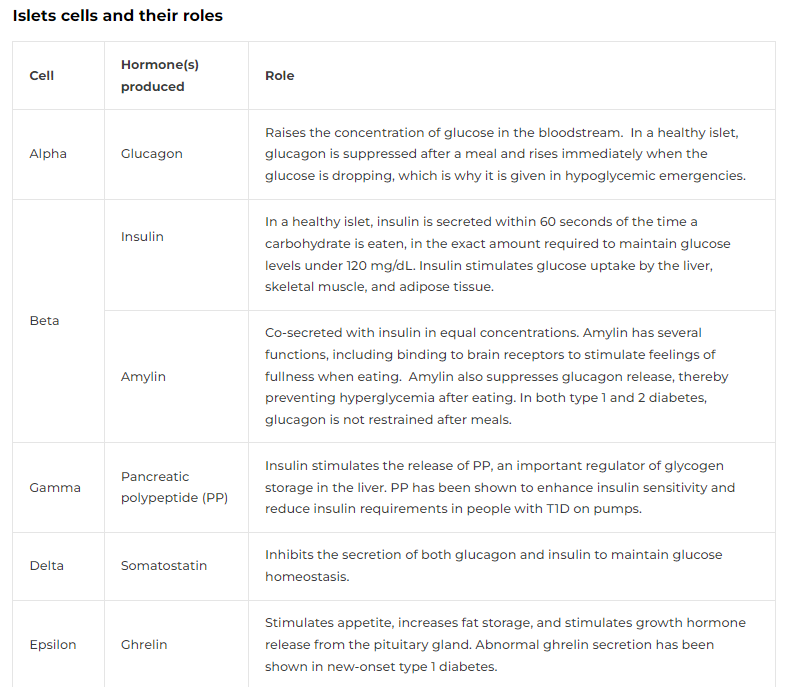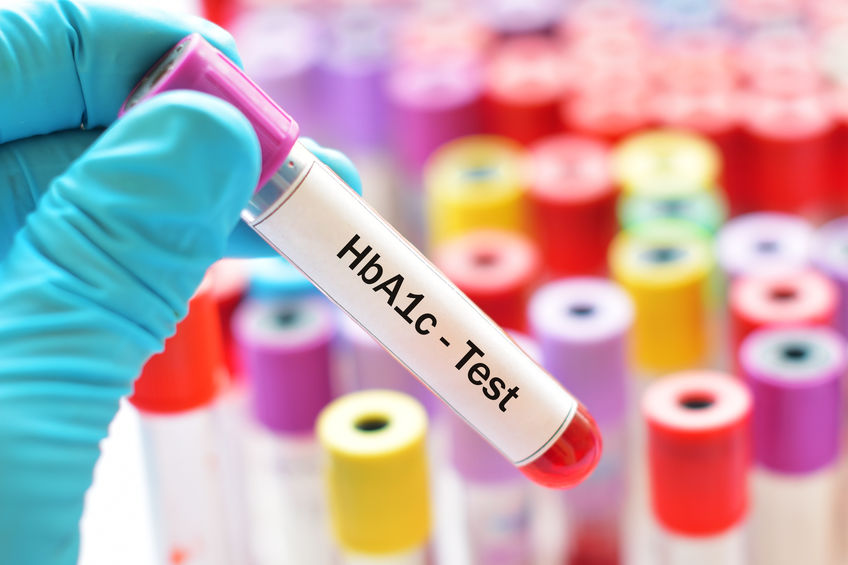FDA Clears Smart Injector Pen Device by Andrew Briskin for diaTribe.org, 17 January 2023.
 In December 2022, the FDA cleared Mallya, a smart sensor that attaches directly to insulin pen injectors, turning a disposable pen into a smartphone-connected device.
In December 2022, the FDA cleared Mallya, a smart sensor that attaches directly to insulin pen injectors, turning a disposable pen into a smartphone-connected device.
Mallya, which was previously cleared in Europe in 2019, helps insulin pen users track important treatment information, including dose taken, date, and time of injection. The device stores this information in the Mallya app, connected via Bluetooth, available on Apple and Android phones.
Unlike other connected insulin pen caps, however, Mallya can also be used to track dosing of GLP-1 receptor agonists. According to Biocorp, the manufacturer, Mallya is the first device in the United States with the ability to automatically connect insulin and GLP-1 injector pens to a smartphone app. Mallya might offer users more convenience than other smart pen devices, as it can attach to many different disposable injection pens, and track dosing for basal and bolus insulin, and GLP-1 receptor agonists. It is also easy to install and remove, making it easy to transfer to new pens.
According to the Mallya website, the device’s lifespan is two years before a replacement is needed, and in no way does it change the way that users operate their insulin pen. The device can be charged via USB and, with average use of three to four injections per day, requires charging once a month. Also, for those who have different pens for multiple types of insulin, the app can connect multiple Mallya devices, one for basal insulin and another for bolus, for instance.
Read more: FDA Clears Smart Injector Pen Device
The Six Dysfunctional Hormones of Type 1 Diabetes by Cristina Jorge Schwarz, T1DExchange.org, 13 January 2023.
Let’s explore the other key cells, in addition to beta cells (which produce insulin and amylin) impacted by the autoimmune attack that causes T1D, shared by Dr. Claresa Levetan, noted researcher in regenerative medicine in endocrinology and diabetes at Grand View Health in Lansdale, PA. Beta cells are only one of the five cells inside the Islets of Langerhans (islets). Islets are clusters of pancreatic cells, with each islet containing up to a few thousand endocrine cells. The autoimmune attack of the beta cells results in islet death, too. Unfortunately, too often the terms beta cells and islets are mistakenly used interchangeably.
 Pancreatic islets contain alpha, beta, gamma, delta, and epsilon cells. These five cells communicate constantly within the islets to secrete six hormones that maintain blood glucose levels within a very narrow range in those living without T1 or T2 diabetes.
Pancreatic islets contain alpha, beta, gamma, delta, and epsilon cells. These five cells communicate constantly within the islets to secrete six hormones that maintain blood glucose levels within a very narrow range in those living without T1 or T2 diabetes.
Postmortem evaluations on people with both T1Ds and T2Ds show a loss in the number of beta cells and a reduction in the number of islets and islet mass. See where this is leading? Due to human physiology, insulin alone cannot restore entire islet function to achieve “normoglycemia.” Once the beta cells die, the communication within the islets becomes dysfunctional.
Given only insulin, people with T1D experience first-hand that maintaining blood glucose levels “in range” is a time-consuming, challenging job. And yet, when people with T1D have difficulty managing their blood glucose levels, doctors and society are quick to blame the patient; but as Dr. Levetan says: “It is the pancreas that is non-compliant, not the patient.”
Read more: The Six Dysfunctional Hormones of Type 1 Diabetes
A1C Results Can Be Inaccurate: What You Should Know by Ross Wollen for DiabetesDaily.com, 13 January 2023.
 Hemoglobin A1C is an estimate of your average blood sugar levels over the past several months. A1C tends to be the one that doctors care about most. That’s because most of the major studies evaluating long-term diabetes health have focused on A1C. When the health authorities design numerical targets for diabetes management success, they prefer A1C. It’s the most important biomarker of glycemic control. A1C, when measured at your medical office or by a laboratory, is usually quite reliable. Except … when it isn’t.
Hemoglobin A1C is an estimate of your average blood sugar levels over the past several months. A1C tends to be the one that doctors care about most. That’s because most of the major studies evaluating long-term diabetes health have focused on A1C. When the health authorities design numerical targets for diabetes management success, they prefer A1C. It’s the most important biomarker of glycemic control. A1C, when measured at your medical office or by a laboratory, is usually quite reliable. Except … when it isn’t.
A 2014 article by Michael Radin, MD, an endocrinologist who now works as an executive for Novo Nordisk, identifies a whopping 17 situations that may falsely lower or elevate an A1C measurement, including:
-
-
- Anemia
- Unusual Hemoglobin Variant
- Chronic Kidney Disease
- Use of Pain Relievers
- Older patients
- Taking Vitamins C or E
- Lab-based A1C tests have a margin of error, reportedly between 0.5 and 0.7 percent
-
One big flaw of A1C: It does not give us any information about glycemic variability, which is the blood sugar’s tendency to change. Two people with the same A1C level could experience very different measures of hypo- and hyperglycemia if one has reasonably steady blood sugar and the other is frequently on the “roller coaster.” Aside from the discomfort and danger of extreme blood sugar levels, the evidence also shows that glycemic variability may help cause diabetes-associated complications
Read more: A1C Results Can Be Inaccurate: What You Should Know
Do Fasting Diets Work? Study Finds Meal Size, Not Timing, Key to Weight Loss by Alan Mozes for HealthDay.com, 18 January 2023.
 When it comes to weight loss, what seems to matter most is how often and how much you eat, rather than when you eat. That’s the conclusion of a new study that focused on the eating habits of about 550 adults. “We found that, on average, the more meals people ate throughout the day, or the more large meals they ate throughout the day, the more likely they were to gain weight over time,” said study author Dr. Wendy Bennett, an associate professor of medicine at Johns Hopkins School of Medicine, in Baltimore. By contrast, “eating more small meals during the day was associated with more weight loss,” added Bennett.
When it comes to weight loss, what seems to matter most is how often and how much you eat, rather than when you eat. That’s the conclusion of a new study that focused on the eating habits of about 550 adults. “We found that, on average, the more meals people ate throughout the day, or the more large meals they ate throughout the day, the more likely they were to gain weight over time,” said study author Dr. Wendy Bennett, an associate professor of medicine at Johns Hopkins School of Medicine, in Baltimore. By contrast, “eating more small meals during the day was associated with more weight loss,” added Bennett.
They found no link between when, in the day, people ate and any change in their weight. So, she noted, “We can’t draw any conclusions about intermittent fasting.”
Read more: Study Finds Meal Size, Not Timing, Key to Weight Loss
Everything You Need to Know About Diabetic Macular Edema by Arvind Sommi for diaTribe.org, 17 January 2023.
 Diabetic macular edema (DME) is a common complication of diabetes that affects the retina, an area near the back of the eye. The retina is responsible for converting light into electrical signals that are sent to the brain, allowing us to see.
Diabetic macular edema (DME) is a common complication of diabetes that affects the retina, an area near the back of the eye. The retina is responsible for converting light into electrical signals that are sent to the brain, allowing us to see.
In people with diabetes, high blood sugar levels can damage the retina’s blood vessels. These damaged blood vessels may leak fluid into the retina, causing it to swell (edema). In DME, the swelling affects a central part of the retina called the macula. The macula is responsible for sharp, central vision, which we use for reading, driving, and recognizing faces. When the macula swells, it can cause vision loss or blurry vision.
DME is approached in two ways: treating the underlying cause of DME, which can be high blood sugar, and healing the retina, including Anti-VEGF injections, steroids, NSAID eye drops, laser therapy, gene therapy, and retinal cellular transplantation.
Read more: Everything You Need to Know About Diabetic Macular Edema
Healthcare company bankruptcies up 84% in 2022 by Hailey Mensik for HealthCareDive.com, 17 January 2023.
 Healthcare companies are currently working through a “COVID hangover” as they deal with factors like continually high labor costs and staffing and supply shortages. Companies are also facing cost increases amid inflation, low returns on invested assets, and interest rate hikes — all of which can strain a company’s cash flow and access to capital.
Healthcare companies are currently working through a “COVID hangover” as they deal with factors like continually high labor costs and staffing and supply shortages. Companies are also facing cost increases amid inflation, low returns on invested assets, and interest rate hikes — all of which can strain a company’s cash flow and access to capital.
Chapter 11 bankruptcy filings for healthcare companies were 84% higher in 2022 compared to 2021, according to a recent report from advisory firm Gibbins Advisors. The combined number of senior care and pharmaceutical companies made up about half of the filings, with bankruptcy activity now returning to 2019 and 2020 levels, according to the report. Just two hospital cases were filed in 2022, compared to 10 filed in 2019, the report found.
Read more: Healthcare company bankruptcies up 84% in 2022




OK, they got me, my health care company RICKFIXDIABETES1; 2;3; 4; 5; 6 -222 are in chapter 11. But my company RICKFIXESARTHRITIS 1; 2; 3; 4; 5; 6-1024 are not yet in bankruptcy (technically)
I do wonder about the Six Dysfunctional Hormones. Do you think if I tell my high school principal about this she will hire on to control them? He really liked to control the uncontrollable.